An Ancient Chinese Treasure for Health and Longevity
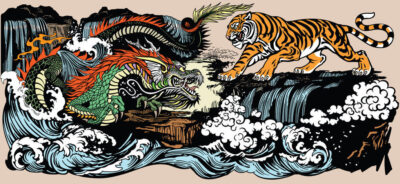
As more people seek natural, safe and effective ways to improve their health, strengthen their immune systems, reduce stress and anxiety, have more energy, emotional balance and greater mental focus, many have come to rely upon the ancient Chinese practice of qigong to accomplish these and many other health and wellness goals.
Dragon and Tiger Medical Qigong is one of the most popular styles of qigong practiced around the world today. The 1,500-year-old self-healing system teaches you to move qi (vital life energy) through well-defined energy lines within your body that are related to acupuncture meridian lines. Its seven-movement form is a low-impact practice very gentle on the joints, and able to be comfortably performed by anyone regardless of age or current level of health. At the same time, it’s very powerful and dramatically increases vitality, promoting healing on many levels.
Before exploring Dragon and Tiger specifically, let’s first take a look at qigong in general to learn what it really is and give you some background in this remarkable Chinese cultural treasure.
A General Overview Of Qigong
Depending upon sources cited, qigong originated in China between 3-5,000 years ago. Not a single static system, it has many variations, styles, and philosophical bases, each with their specific purposes and objectives. It can be done as a stationary standing practice or a moving form with many parts. Some styles can be done while sitting or lying down, by oneself or with a partner. It has continued to grow and evolve over the centuries, and is perhaps the most well-researched, comprehensive and highly developed system on the planet for building health and extending longevity. That it has continued to flourish through the millennia is a testament to its unique, profound effectiveness and versatility.
Even in the early stages of a beginner-level practice, qigong promotes greater self-awareness, awakening you to increasingly more subtle levels of your being. Many qigongs are rooted in spiritual traditions that transcend simply improving physical health and longevity, adding a nuanced richness and deeper dimensions to enhancing your life. At the highest levels of practice, it is a path to enlightenment and spiritual cultivation, and can prepare your mind for the deepest meditative practices.
Defining Qigong
In order to better understand what qigong is, let’s take a look at the word “qigong” itself, since that will tell us a lot about the actual practice. It is made up of the two syllables “qi” (pronounced “chee”) and “gong”. As each syllable in the Chinese language is itself a discrete word, we’ll first define each syllable separately to gain insight into its fullest meaning.
Often translated as “vital life energy”, or simply “energy”, qi is the sum of all the functional energies that animate and keep you alive, aware, and healthy. The electrical energy measured by an EEG (measuring brain activity) and EKG (measuring heart functional energy), the magnetic energy of an MRI that allows for the magnetic imaging of every cell in your body—all of your cells are polar— the neural energy running through your nervous system, the biochemical energy of enzymatic reactions, hormones and neurotransmitters, and the functional energy of every internal organ are all a part your qi. For a Western mind, this understanding can provide some useful touchstones, but it’s only a part of the totality of your qi, which includes many more subtle aspects than what are contained within the current Western medical paradigm.
In the context of qigong you may find that qi is sometimes translated as “breath” or “breathing”. This is not technically incorrect, since the Chinese character for qi as energy is identical to the character for qi as breath, and we’ll soon see that the Regulation of the Breath is an integral component of all qigongs. But that’s only a part of what qigong is about, and leads to the misinterpretation of qigong as “breathing exercises”. Sometime qi is translated as “subtle breath”, which distinguishes it from the common breath, and is more accurate as it’s the “subtle breath” that is the qi that circulates through our body’s numerous energy pathways.
“Gong” means practice, skill, or cultivation. As in the Western use of the word “practice” as it relates to practicing a musical instrument, practicing medicine, practicing law, or really any profession or avocation in which you may want to acquire some proficiency, it requires some effort invested over a period of time to gain that skill. That acquired skill is the desired result of the practice.
Because all qigongs involve regulating the body, “gong” is sometimes interpreted to mean “exercise”, so that “qigong” is often translated to mean “energy exercise”, but as with “breathing exercise”, it’s also a limited interpretation. In fact, the word “exercise” is sometimes used as a gentle admonition by a qigong master correcting a novice: “You’re not doing qigong, you’re just doing an exercise.” Once learned, an exercise is something that can be effectively performed by rote. In qigong, your full awareness needs to be engaged throughout the entirety of your practice.
Now we can see that the word qigong most accurately means effort invested over time in working with your vital life energy in order to sense, direct, and gather it for the purpose of enhancing your life in a variety of ways. You get to choose what those enhancements might be based upon the style of qigong you select to practice.
Five Philosophical Bases For All Qigong
The five broad categories of qigong are derived from one of the Five Philosophical Bases that most inform each practice. Those are Daoist, Buddhist, Confucian, medical and martial. Each category is very rich and varied, but looked at simply, we can say that Daoist qigongs are most concerned with aligning oneself with the cycles and energies of the natural world and promoting longevity; Buddhist qigongs are most concerned with spiritual cultivation and enlightenment more than with physical health; Confucian qigongs are most concerned with intellectual achievement and societal ethics; medical qigongs are most concerned with preventing illness and treating disease; and martial qigongs are most concerned with developing physical and energetic power for martial applications. Each of the five categories may contain hundreds of different qigong practices ranging from the very simple and relatively common to the very complex and rare.
While there are qigongs that purely adhere to one of the Five Philosophical Bases, it’s common for there to be some overlap among styles. For example, the Daoist qigongs that promote longevity naturally inform some of the health-building aspects of medical qigongs (and vice versa), while the intellectual clarity produced by Confucian qigongs help the mind travel along some the more challenging aspects of spiritual cultivation in Buddhist qigongs.
The Three Regulations
No matter the philosophical basis or style, all complete qigongs include The Three Regulations: The Regulation of Body, Breath, and Mind. Beyond just improving your physical health, each of the Three Regulations influence your emotional, mental, and psychic states of being, more directly as you advance in your cultivation. At very high levels of practice, you can access, balance and clear your karma.
The specific ways in which body, breath and mind are regulated can vary considerably depending upon the goal and purpose of the particular qigong being practiced. The coordinated regulation of body, breath and mind further regulates the qi, first by intention, and ultimately by the mind’s direct contact with qi.
While each qigong has a particular focus, a specific purpose for which it’s intended, all initially produce a similar range of baseline benefits, including general well-being, more energy, reduced stress and increased mental clarity. No matter what style of qigong you may choose to practice, you can expect this common range of benefits. This is because through the Three Regulations, all help you to tune into the wisdom of your own body, releasing negative or restrictive energies, thoughts, and beliefs while bringing you back into balanced wholeness.
Now let’s examine the specifics of a most versatile, accessible and rewarding practice, Dragon and Tiger Medical Qigong.
Dragon And Tiger Medical Qigong History
The origins of Dragon and Tiger Medical Qigong are traced back 1,500 years. Its creation is attributed to the Bodhidharma, who taught it to monks of the Shaolin monastery in China to help strengthen and revitalize their bodies after extended periods of seated meditation. It included the stimulation of qi flow through qigong and acupuncture meridian lines, providing the foundation for an energy wisdom that blended Daoism, Buddhism, and Chinese medicine. That information was passed to each successive head abbot of the Shaolin monastery in an unbroken lineage through the centuries until the mid 20th century, when the last head abbot taught it to his niece, Zhang Jia Hua, a doctor of Chinese medicine.
Dr. Zhang was very experienced in the use of qigong for medical purposes, and made some additional refinements to the practice, transforming it into the even more powerful medical qigong it is today. Those refinements made Dragon and Tiger one of the most widespread and successful treatments for cancer and other serious degenerative diseases throughout China. During the 1960s and 1970s, she taught more than 20,000 instructors who spread Dragon and Tiger Qigong to over 20 million people. (As an aside, I learned Dragon and Tiger from Daoist Master Bruce Frantzis, who learned it directly from Zhang Jia Hua.)
The Meaning Of Dragon And Tiger
The Chinese often use animals to represent the characteristics associated with an abstraction they are describing, common in Chinese astrology and Five Element Theory, for example. In this qigong context, the dragon is associated with the lungs, which take in the air we breathe, while the tiger is associated with the liver, which powers so many of our physiological processes. The first movement of Dragon and Tiger particularly benefits the lungs and liver, giving this set its name. Here are some characteristics of each of these animals, and the associated benefits you may expect from Dragon and Tiger Qigong.
As the flying dragon is a creature of the air, the first associated correspondence is to the air itself. Dragon and Tiger strengthens your lungs and increase your ability to take in fuller, deeper breaths. We’ve seen that the Chinese character for breath is identical to the character for qi, so as you bring in more air with each breath, you are bringing in more qing qi, or atmospheric qi (literally, “clear qi”). The breathing practices contained within Dragon and Tiger increase your ability to extract more qing qi from the air, which builds your reserves of qi.
A second quality is that of the dragon’s movements, sinuous and lithe. Dragon and Tiger creates a physical openness that engenders a flexibility in your body you may not have enjoyed since you were very young.
A third quality has to do with the positive emotions associated with the lungs. When the lungs are functioning well, you will experience an upsurge in vitality and an exuberance for life, increasing your enthusiasm and joy. Conversely, when the lungs are not functioning well, you will often feel sad even when there’s no apparent reason for such sadness. A two-way street, prolonged periods of grief will likewise adversely affect the overall health of your lungs.
The tiger is the animal associated with the liver. The tiger is very powerful, agile and quick, able to transition from a relaxed stillness to the immediate physical activity of a rapid pounce or run in almost no discernable time.
The first association with the tiger’s power corresponds to the power of a well-functioning liver. The liver is involved in aspects of digestion, nutrient assimilation, detoxification, production of enzymes, the storage of glycogen, vitamins and minerals, and more. Its far-reaching influence on our metabolism and physiological processes is staggering. The health and strength of our body depends extensively on the liver’s ability to perform its functions optimally.
Another aspect of that power exists on the emotional level. It takes drive and perseverance, a kind of psychological power, to make changes in the world and in your life. A healthy liver provides that ability to accomplish, to get things done in a positive and productive way. This means you have the inner strength and focus to do what needs doing yourself, or you are able to inspire others to help when help is needed. By contrast, an imbalanced liver will make you easily angered, and that anger can be used to fuel anger-driven actions (which may even be directed against yourself) or to intimidate others into doing what you want. While still powerful, this is a pathological manifestation of impeded liver energy, an unhealthy way of getting things done.
According to Chinese medicine, the liver controls tendons and ligaments. When the liver is functioning well, your tendons and ligaments will be relaxed, allowing your body a greater freedom of movement, as embodied by the supple grace of the tiger. This helps reduce any restrictive physical pain you may have, and provides not only a greater freedom of physical movement, but greater internal freedom on every level. This involves the more subtle aspects of the manifestation of power, whether that’s applied for health, longevity, martial ability, social influence, intellectual accomplishment or spiritual cultivation.
The liver is also responsible for the smooth flow of qi throughout your entire body. This promotes the optimal functional energy of every organ, allowing each to do its job best and work in balanced harmony, fostering homeostasis. It reduces stress, helps maintain both physical and emotional equilibrium, and sharpens your reflexes, creating the same type of smooth continuous internal flow that allows the tiger to move from a relaxed aware stillness to an immediate pounce with no hesitation or awkwardness.
Physical And Energetic Characteristics Of Dragon And Tiger
Dragon and Tiger is primarily a medical qigong that balances the body’s energy systems in accordance with the principles of acupuncture and Chinese medicine. The inclusion of Daoist and Buddhist elements in Dragon and Tiger are used to support and enhance its medical applications. Increased sensitivity and awareness are the hallmarks of all qigongs, and with focused attention on your body, breath and mind, your awareness grows, helping to connect you to your healing qi more deeply. At advanced levels of practice, it can move into spiritual realms, fully integrating body, heart-mind (xin) and spirit (shen) for profound healing on every level of being.
On the surface, Dragon and Tiger have some similarities to the beautiful flowing movements of taiji (tai chi), and many of the principles of Dragon and Tiger can be transferred directly to taiji if you choose to learn that at some later time. It even provides many comparable benefits, improving balance, coordination, strength and longevity. With only seven movements it’s much easier to do, taking less time to learn and less space to practice. Each of its movements focuses on a particular meridian pathway or organ system, and each has specific targeted medical effects that will provide you numerous health benefits beyond those found in taiji. The synergy among the seven movements creates a system-wide energetic upgrade that benefits the health of your entire being.
Despite its simplicity, it’s a complete medical qigong system addressing almost every part of your health needs. Practiced regularly, you will activate and balance the core energy channels most commonly addressed in qigong, and the major acupuncture meridians, releasing blocked and stagnant energy both from your physical body and from the energy field around you, known as the qi body or the etheric field.
Some Expected Medical Benefits
As a therapeutic practice, Dragon & Tiger is designed to balance your body’s energies to prevent, eliminate, or reduce the suffering of disease. In China, it has been used to treat cancer and other serious degenerative conditions. Its seven movements are repeated a number of times, gently stretching, opening and releasing the body, making you more flexible and relaxed. It will reduce stress, improve blood circulation and increase synovial and lymphatic fluid movement, build energy, and enhance your felt sense of general well-being. By increasing awareness of how your body moves through space (proprioception), it‘s also excellent for improving balance, an important consideration for older people and athletes alike.
* The Regulation of the Body can be viewed simply as physical activity, yet when practiced with awareness, it promotes health on both physical and energetic levels, and lays the foundation for deeper energetic benefits that come later. In Dragon and Tiger, some of the physical regulations include weight shifts, which help improve balance in the same way that taiji is known to do; and bending, stretching, and gently twisting muscle tissue, which helps both to release physical tension, promoting relaxation, and opens pathways through which qi flows, reducing obstructions in order to increase the amount of qi available to circulate throughout your body. Removing qi obstruction and promoting qi flow is also the main mechanism through which it relieves aches, pains, and other physical discomforts.
When proper body alignments are learned and maintained, many of the movements release contracted muscles throughout the body, especially in such common trouble areas as the neck, shoulders, upper back, lower back and hips. Some movements massage and cleanse the axillary and inguinal lymph nodes, stimulating the flow of lymph fluids and benefiting the entire immune system. Some Dragon and Tiger movements stimulate communication between hemispheres of the brain, improving cognition in ways similar to the Western physical therapy technique of “cross crawl”, used to rehabilitate people with brain injuries and other cognitive dysfunctions.
* Regulation of the Breath most obviously improves lung health, breathing capacity, and resistance to airborne pathogens. It helps to create the optimal acid/alkaline balance throughout the body, crucial to overall good health. As important as these are, they are just a small part of the benefits derived from the Regulation of the Breath.
The Daoist natural breathing used in Dragon and Tiger gently pressurizes all of the internal organs, in effect massaging them to facilitate releasing the toxic accumulations of metabolic waste material in the same way massage therapy does for muscle tissue. It also frees any binding restrictions in the suspensory ligaments that attach each organ to the vertebral column. This allows for both greater organ mobility (its ability to be freely moved, the lack of which often causes pain) and organ motility, the natural movement patterns intrinsic to and generated by each organ. Together this increases the optimal functional energy of each organ, its ability to perform its intended functions, which is a large part of the organ’s qi.
In a purely Western medical context, there have been numerous studies that support this understanding. One study in New York State tracked 12,000 people for nearly three decades, and found that the stronger your lungs are, the less likely you are to die of any cause, when compared to other people in the same demographic. (Schunemann, H. J., Dorn, J., Grant, B. J. B., Winkelstein, W., & Trevisan, M. (2000); Pulmonary Function Is a Long-term Predictor of Mortality in the General Population. Chest, 118(3), 656–664.) The European Society of Cardiology reported that even a minor drop in lung capacity raises your heart disease risk by 200%. (The European Society of Cardiology, 1998.)
The University of Arizona researched possible holistic treatments for Covid-19. They reported that among 20 subjects taught to practice qigong, there was a significant increase in lung capacity and that after just 10 days, their lungs had become 20% better at taking in oxygen and exhaling carbon dioxide. It was noted to be a potentially lifesaving improvement.
* The Regulation of Mind improves cognition, mood, and perception. When layered in with aspects of Regulating the Body as discussed above, it further improves communication between hemispheres of the brain. This enhances creativity, analytic ability, and overall intelligence.
A well-know qigong principle states that “the qi directs the body, but the mind directs the qi”, or more simply put, where the mind goes, the qi follows. When integrated with the Regulation of the Body and Breath, the Regulation of the Mind most fully regulates the qi, providing the greatest benefits possible in regards to health, well-being, vitality and longevity. This is where the ability to directly feel and work with your qi becomes most apparent, and where Dragon and Tiger becomes most fun and exciting.
Somewhere between 6” and 18” outside your physical body is the perimeter of your qi body, also known as the etheric field. Dragon and Tiger teaches you to learn to feel that perimeter, and to move qi through it in specific ways. The qi of your qi body connects directly with the Dragon and Tiger energy lines within your physical body. Moving qi through your qi field moves qi through the corresponding energy pathways within your body, which creates all the health benefits and other positive changes that this medical qigong practice provides.
What’s Next?
Now that you have a detailed conceptual foundation for Dragon and Tiger Medical Qigong, the next thing you might want for further insight is an actual demonstration of the Dragon and Tiger form. Click on this link for an in-depth look with additional descriptive information about each movement, and graphic representations of all the associated energetics.
About the Author:
Steven Cardoza, M.Sc., L.Ac, holds a Master of Science degree in Traditional Chinese Medicine and is a nationally certified Chinese medical physician, a licensed acupuncturist and herbalist with over twenty-five years of experience. He is a certified instructor of Wu taiji and many styles of qigong, and has taught public and professional classes and workshops since 1986. He is the author of the books Chinese Holistic Medicine In Your Daily Life (2017), and Chinese Healing Exercises, A Personalized Practice for Health and Longevity (2013), both published by Llewellyn Publications; and the companion DVD, A Visual Guide To Chinese Healing Exercises. Email Steven at healingdragon@dslextreme.com or visit www.healingdragon.org

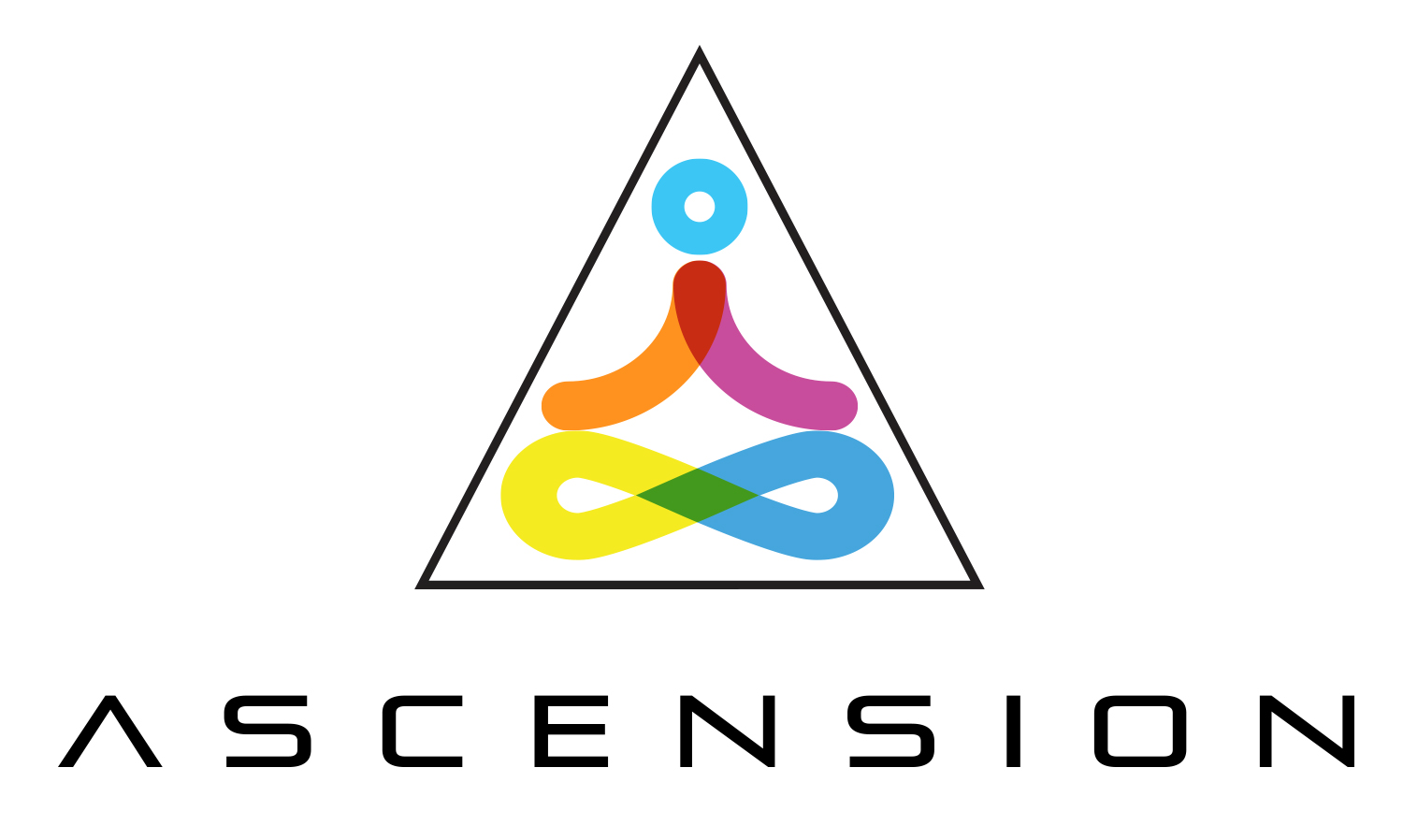

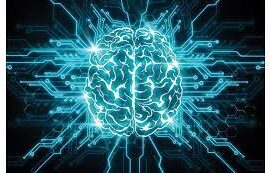


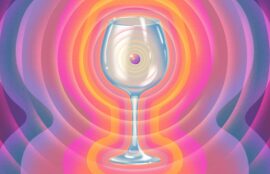




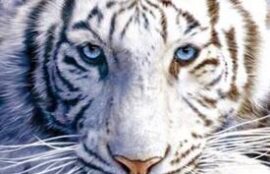






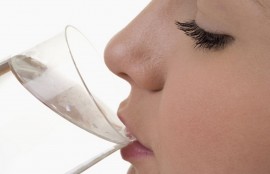


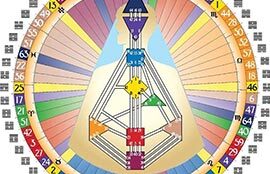
Sorry, the comment form is closed at this time.